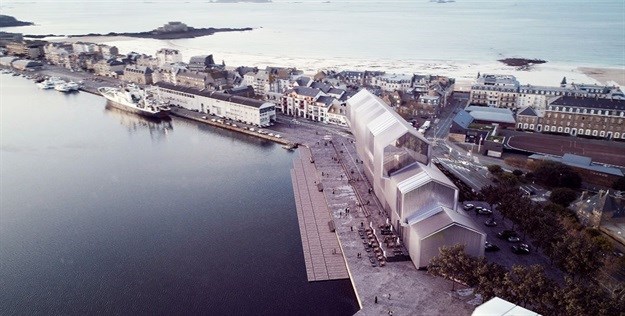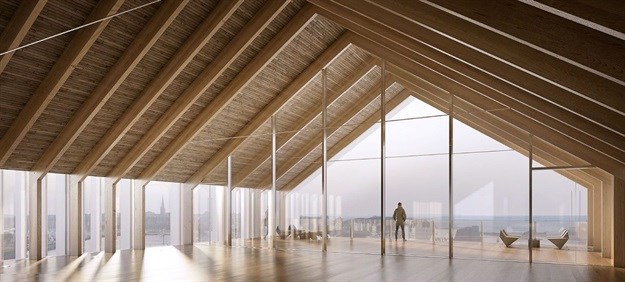Kengo Kuma to design suspended museum on the Channel Coast of France

Developed in collaboration with engineering firm Egis Grand Ouest, quantity surveyor Lucigny Talhouet and Associés, acoustic consultant Theatre Projects and landscape architecture firm Volga Urbanisme and Paysage, the floating museum will be built in one of the most emblematic cities in France, located in the north-east of Brittany, on the Channel Coast.
Aiming to be a futuristic museum in the city, the Maritime History Museum will mark its prestigious maritime history through the eras, combining past, present and future.
The goal of the project is to bring a dynamism to the city and create a deep impact with its emblematic and suspended form. The 6,000m2 building will contain permanent and temporary exhibitions, educational activities, events and a restaurant.
Place of destination and attraction
"The project takes place in front of Duguay-Trouin dock and is a unique opportunity to balance with the 'Intramuros' historial city fortifications. The new museum stands as a counterpoint, a new place of destination and attraction," said Kengo Kuma & Associates in its project description.

"It forms a key piece in terms of articulation between the historical city and the new districts. In opposition to the 'Intramuros', anchored on its rocks and surrounded by its ramparts, the museum rises and opens onto its territory."
The building's architectural form responds to the harbour typologies and to both the naval and industrial architecture facing it. The studio designed compact and vertical shapes, echoing the existing silos. The museum is considered a new benchmark, allowing for the creation of large urban spaces necessary for cultural programmes to breathe and offers a suspended unique museum experience.
"From the initial request to create a belvedere above the museum, we chose to create a 'belvedere museum' offering a panoramic view directly from the exhibition spaces," explained the studio.
City-sea dichotomy
"Our design proposal strives to offer soft, efficient and evolutionary surfaces that can evolve over the time to absorb new collections as well as new museum practices. On the sea side, the wind sweeps and carves the volumes resulting in this volumetric singularity that characterises the main entrance facade. This city-sea dichotomy, balance-imbalance, is highlighted and thus responds to the different contexts."

For the exterior skin, the studio chose an engraved zinc, rough with clear shades that captures the natural light and the special atmosphere of Saint-Malo.
"Its use in vertical elements randomises the building, giving a visual vibration that changes according to the viewpoint of the observer and the orientation of the sun. Its texture, light gray and slightly shiny, reflects the water and the sky," added the architects.
The Maritime History Museum will be blended in the landscape and it will not appear as a massive volume but as a filtered facade. The new museum is expected to open in 2022.
Article originally published on World Architecture Community.
Source: World Architecture Community

Since 2006, World Architecture Community provides a unique environment for architects, architecture students and academics around the globe to meet, share and compete.
Go to: https://worldarchitecture.org/





